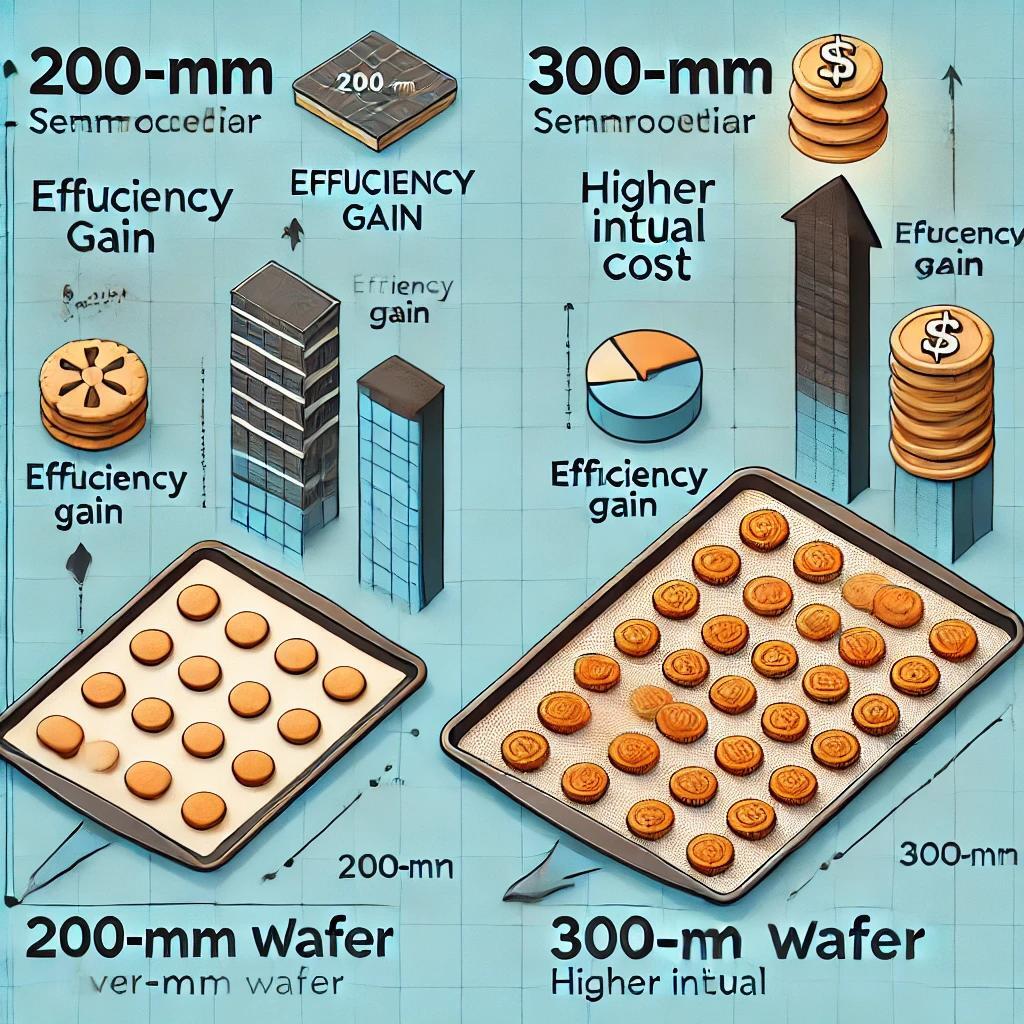- Nexan Insights
- Posts
- The "Boring" Backbone Driving Billion-Dollar Markets
The "Boring" Backbone Driving Billion-Dollar Markets
How Analog Chips and Strategic Manufacturing Keep the Semiconductor Industry Thriving

This investor-oriented table highlights key operational, strategic, and competitive insights into the analog semiconductor industry, focusing on Texas Instruments (TI) and its manufacturing strategies. It explores the transition to 300-mm wafers, the benefits of vertical integration, manufacturing footprints, barriers to entry, and supply chain resilience.
Texas Instruments (TI) continues to solidify its dominance in the analog semiconductor industry through a combination of 300-mm wafer manufacturing, vertical integration, and a strategically distributed global footprint. While analog may lack the glamour of AI chips, its high-mix, low-volume nature demands operational precision and long-term investment horizons. TI's infrastructure and manufacturing strategies form a formidable moat—one that newer entrants find nearly impossible to cross.
1. The Shift to 300-mm Wafers: Economies of Scale in a High-Mix Market
TI’s transition from 200-mm to 300-mm wafers reflects a deliberate capital allocation strategy aimed at long-term unit cost reduction.
Die output per wafer increases by ~2.2x with 300-mm wafers versus 200-mm, significantly lowering cost per unit.
Estimated capex per fab: $6B–$10B, depending on tool sets, cleanroom sizing, and backend integration.
Ramp-up cycles stretch 24–48 months due to analog-specific qualification cycles and SKU diversity.
Context: Unlike digital logic, analog wafers carry a diverse set of design rules, and qualification is product-specific. This makes transition slower—but ultimately more rewarding once economies of scale kick in.
For investors, the capital-intensive transition has a long payback period but strengthens margin resilience across future cycles.

"Transitioning from 200-mm to 300-mm wafers: Increased efficiency and chip output with higher initial costs."

2. Vertical Integration: Margin Stability Through Full-Stack Control
TI's vertically integrated model contrasts sharply with the fabless or outsourced analog peers (e.g., Analog Devices, Onsemi):
Internal fabs enable greater cost control and rapid response to demand shifts.
Design-to-package ownership reduces external dependencies and improves yield tuning across process nodes.
Integration synergies allow TI to optimize for unit economics and supply reliability simultaneously.
Data Point: TI’s gross margins (~67%) consistently outperform competitors, in part due to lower silicon costs and efficient die utilization.
This approach is rare in the analog domain, where many players are fabless or rely on aging 200-mm foundries with longer lead times and less margin control.

"Vertical integration: TI’s full-stack approach boosts efficiency and supply chain control."

3. Manufacturing Footprint: U.S. Fabs + Southeast Asia AT Centers
TI has engineered a global cost-performance balance by colocating high-capex fabs in the U.S. and labor-intensive assembly/test (AT) in Malaysia and the Philippines.
Location | Function | Strategic Role |
|---|---|---|
Sherman, TX | 300-mm fab | Domestic resilience, CHIPS Act alignment |
Dallas, TX | 300-mm fab | Legacy analog product lines |
Malaysia/Philippines | Assembly/Test | Low-cost packaging, geographic risk hedge |
Geopolitical insulation: U.S.-based fabs hedge against trade restrictions and align with domestic reshoring incentives.
Operational flexibility: Lower labor cost centers improve backend efficiency without compromising TTM.
Risk Note: Fabs require significant lead time to reach yield targets. If demand softens during ramp, underutilization drags margins.

"Cost comparison: U.S. fabs incur higher costs, while AT facilities in Asia offer labor savings."

4. Barriers to Entry: Why TI’s Position is Difficult to Replicate
Analog manufacturing is fundamentally different from digital logic:
Product diversity: TI supports hundreds of thousands of SKUs—each with unique layouts, specs, and test regimes.
Process heterogeneity: No “one-size-fits-all” node; analog spans from 180nm to 350nm and even higher.
Legacy retention: Industrial and automotive customers often require parts to be available for 10–20 years post-launch.
Strategic Moat: The sheer complexity of maintaining analog manufacturing infrastructure—alongside design IP and test coverage—creates non-trivial switching costs and capability gaps for would-be challengers.
Even well-capitalized firms struggle to justify analog fab investment due to the long-cycle ROI and need for deep analog engineering expertise.

"Barriers to entry: High costs, specialized knowledge, and supply chain complexity protect TI’s market position."

5. Supply Chain Resilience: Post-Disruption Rebalancing
Events such as the 2011 Japan earthquake and 2011 Thailand floods exposed vulnerabilities in overly centralized semiconductor supply chains.
TI’s updated geographic strategy emphasizes:
Redundancy in critical operations
Distributed test centers to avoid single points of failure
Closer alignment with key regional OEMs (U.S., EU, ASEAN)
Strategic Insurance: TI’s supply resilience became a differentiator during the COVID-19 era and will continue to be a selling point in supply-constrained cycles.
Additionally, domestic fab expansion aligns TI with U.S. industrial policy and enhances its eligibility for government-backed incentives.

"Geopolitical disruptions: TI’s diversified supply chain enables faster recovery compared to competitors."

Takeaways: Strategic Implications for Operators and Investors
For Semiconductor Operators:
Analog manufacturing requires long-horizon capex planning, SKU-specific process optimization, and dedicated test infrastructure.
The economics of analog fabs are volume-insensitive—resilience and uptime matter more than sheer wafer output.
For Investors:
TI’s analog strategy offers margin consistency and cash flow visibility uncommon in the cyclical semiconductor space.
Transition to 300-mm wafers and U.S.-based fabs enhances strategic defensibility and inflation resilience.
For Competitors:
Entering analog manufacturing at TI’s scale is economically prohibitive.
Competing effectively requires niche focus, fabless IP depth, or differentiation in interface/systems (e.g., ADI’s playbook).
Conclusion:
Analog chips remain the functional backbone of the digital age—quietly converting, conditioning, and managing physical signals across every connected system. Texas Instruments’ operational strategies in wafer scaling, vertical integration, and supply chain design reflect a mastery of slow-burn defensibility. In a market chasing photonic accelerators and 3nm bragging rights, TI’s analog manufacturing discipline remains one of the most underappreciated economic fortresses in the industry.

"Analog chips: The vital core powering sensors, signal conversion, and power management across industries."


